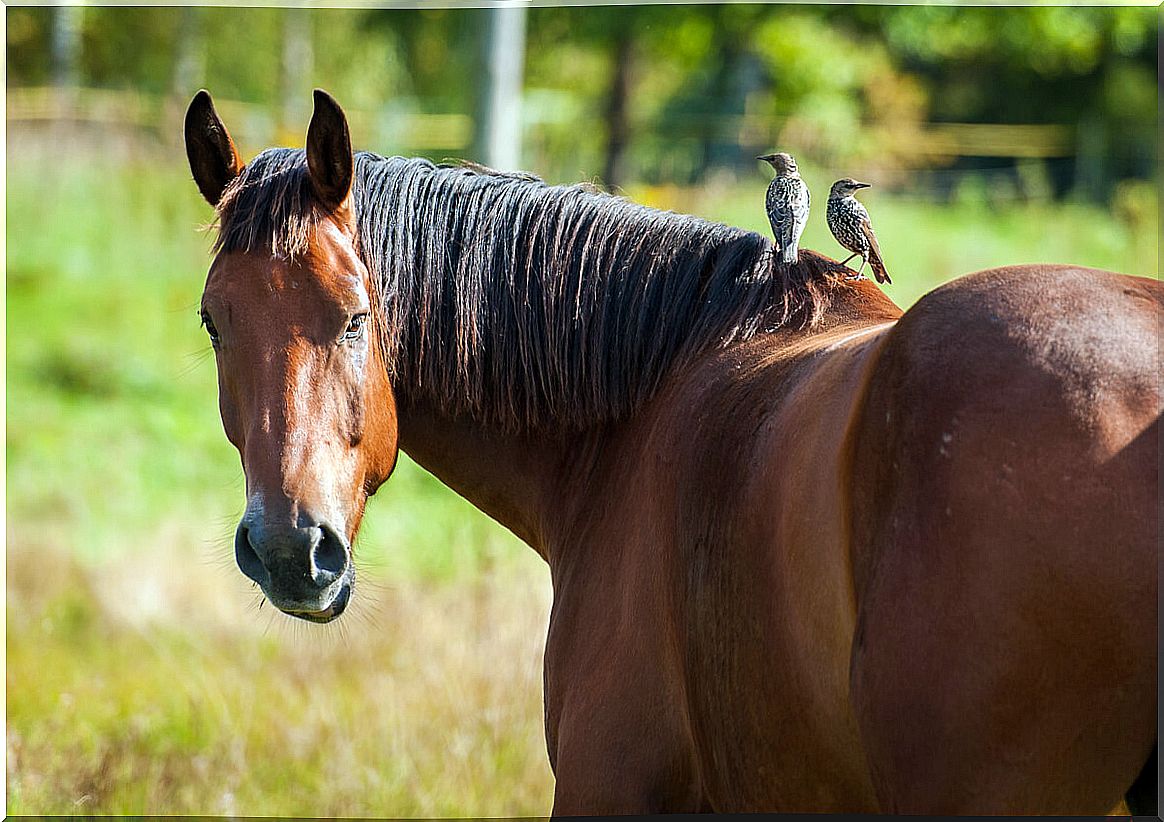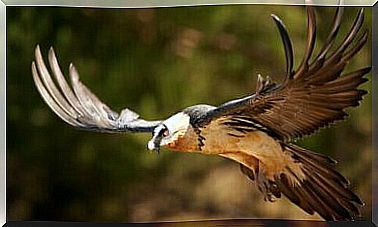West Nile Encephalitis: A Shared Disease

West Nile Encephalitis is an emerging disease in North America and Europe. This means that there are not yet too many measures to deal with it and it can put animal and human health at risk. Furthermore, it is a shared disease: a zoonosis that affects animals and humans alike.
For some it may be a newly discovered disease that they had never heard of until this year, but many other people will know that this virus has been threatening the health of certain species for several years now.
Overview of West Nile Encephalitis
The causative agent of this disease is the West Nile virus, that is , the West Nile virus . It is a virus belonging to the Flaviviridae family , native to sub-Saharan Africa, where it is endemic.
This virus infects equidae, especially horses, which are the main host. The problem is that humans can appear as accidental hosts and suffer the same symptoms.
In addition, the virus also uses birds, mainly migratory aquatic species , as a natural reservoir. It shares this trait with the Culex spp . Mosquito , which acts as a vector of the disease.
Beyond birds, horses and humans, there are other accidental hosts such as cats, dogs, sheep, goats, squirrels or rabbits, although with little relative importance. In any case, it is understood why this pathology is designated as a shared disease, right?
Transmission
The mosquito is in charge of taking the virus from an infected animal and transmitting it to another susceptible animal through the bite. However, this pathogen can also be spread by other means.
For example, the virus can be transmitted during blood transfusions and transplants from infected donors or during pregnancy and lactation, although there are still no 100% corroborating studies on the latter.
In the case of humans, extra caution is recommended in handling potentially infected animals. This can be the case of a person who finds one of those migratory birds dead during a walk in the field. Better to take extreme precautions.

Symptoms in horses, the main species affected by West Nile Encephalitis
A mosquito bite is followed by a series of processes that trigger the arrival of the virus to the central nervous system. The agent then begins to proliferate in neurons, triggering the immune response and causing tissue inflammation.
This inflammation spreads through the different areas of the brain and spinal cord, an event that causes symptoms like the ones shown below:
- Fever, weakness, and depression.
- Anorexy.
- Incoordination and partial paralysis of the extremities.
- Involuntary muscle contractions
- Changes in behavior — for example, movements in circles without any aim.
Do birds have symptoms?
No, the usual thing is that they do not have them. Birds often suffer from what is called an inapparent, asymptomatic disease. Corvids are an exception to this rule, since there is a high mortality associated with the infection in them.
What happens in the case of humans?
The truth is that it is such an unknown disease to the public because most infections do not cause any symptoms or, at most, mild symptoms such as fever, headache and general malaise. Still, in the small percentage of people with severe signs, the disease can have fatal consequences :
- High fevers appear with very severe headaches, accompanied by fatigue and an inexplicable sleep.
- Neck stiffness, typical of inflammation of the meninges – meningitis – is common.
- People suffer from disorientation, tremors, spasms, seizures, paralysis, and coma. In the most severe cases, the disease is fatal.
Is there treatment?
Unfortunately, there is no specific treatment for this virus. The only possible thing is the administration of medication to control the symptoms, so that the patient – animal or human – improves.
Despite the bad news and thanks to advances, vaccines are beginning to be used in horses in the United States and Europe. Especially in infections caused by viruses, vaccination has proven to be the best preventive weapon.
What do you do when faced with such an unknown zoonosis and no treatment options?
As they say: prevention is always the best treatment. To accomplish this, the main thing is to continue studying the disease. Only then can we anticipate it .
For now, we know the species that usually act as a natural reservoir for the virus: birds and mosquitoes. Therefore, it is necessary to subject both to epidemiological surveillance measures:
- The first thing will be to analyze the situation in the country. If you are in an area where migratory birds pass through, it is more likely that one of them appears infected. Therefore, bird samples should be taken in Wildlife Recovery Centers, zoos or in the wild.
- At the same time that the birds are monitored, the transmitting mosquitoes must be controlled, or at least prevent the exit of the susceptible animals – horses – in the hours of greatest presence of the mosquitoes.
- In the event of verifying the presence of the virus in the birds, the equid populations will be monitored, which are truly worrisome.

In the case of humans, the most sensible thing to do is to keep the population informed about the existing risks. The most important thing of all is to provide adequate training for healthcare personnel so that, should they encounter symptoms, they can recognize the West Nile Virus .









